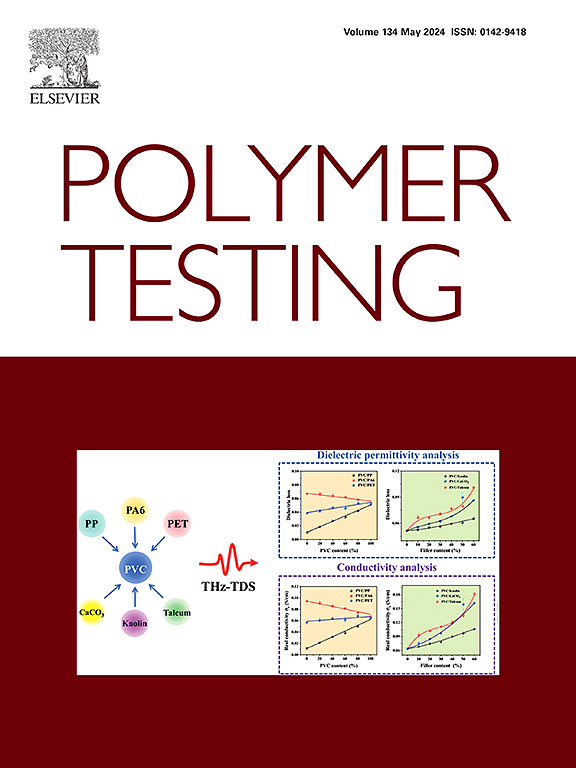Fatigue lifetime of rubber composites – State-of-the-art
IF 5
2区 材料科学
Q1 MATERIALS SCIENCE, CHARACTERIZATION & TESTING
引用次数: 0
Abstract
This paper reviews the literature regarding the fatigue strength of rubber composites - with particular emphasis on using rubber as a matrix. Various forms and materials of rubber reinforcement in rubber-based composites were analyzed. The use of 'classic' reinforcements, such as glass, carbon, or aramid fibers, was especially considered. It was noted that carbon reinforcement can take place in various forms - not only in the form of fibers but also, for example, carbon black. Literature data on rubber reinforcement with plastics, silica, or metal elements, e.g., for the production of tires, were analyzed. What is essential from the point of view of ecological aspects is the possibility of strengthening rubber, being a natural material, with natural additives derived from plants. It was observed that in rubber composites, the reinforcement occurs not only in the form of short or granular fibers but also in the form of continuous fibers – especially in the form of cords. The paper focuses on the analysis of the fatigue properties of these composites, identifying the location of the crack and its path, the course of the hysteresis loop, the dependence between and strain under cyclic loading of these materials, and also the computational models used in the fatigue analysis of rubber-based composites.
求助全文
约1分钟内获得全文
求助全文
来源期刊

Polymer Testing
工程技术-材料科学:表征与测试
CiteScore
10.70
自引率
5.90%
发文量
328
审稿时长
44 days
期刊介绍:
Polymer Testing focuses on the testing, analysis and characterization of polymer materials, including both synthetic and natural or biobased polymers. Novel testing methods and the testing of novel polymeric materials in bulk, solution and dispersion is covered. In addition, we welcome the submission of the testing of polymeric materials for a wide range of applications and industrial products as well as nanoscale characterization.
The scope includes but is not limited to the following main topics:
Novel testing methods and Chemical analysis
• mechanical, thermal, electrical, chemical, imaging, spectroscopy, scattering and rheology
Physical properties and behaviour of novel polymer systems
• nanoscale properties, morphology, transport properties
Degradation and recycling of polymeric materials when combined with novel testing or characterization methods
• degradation, biodegradation, ageing and fire retardancy
Modelling and Simulation work will be only considered when it is linked to new or previously published experimental results.
 求助内容:
求助内容: 应助结果提醒方式:
应助结果提醒方式:


